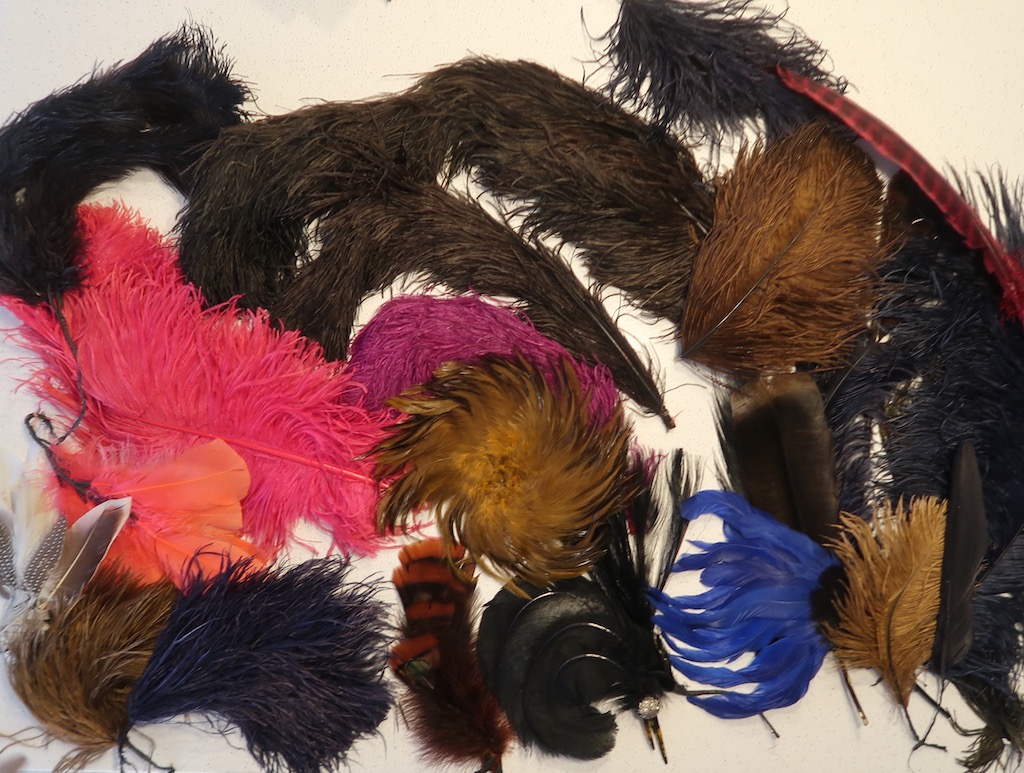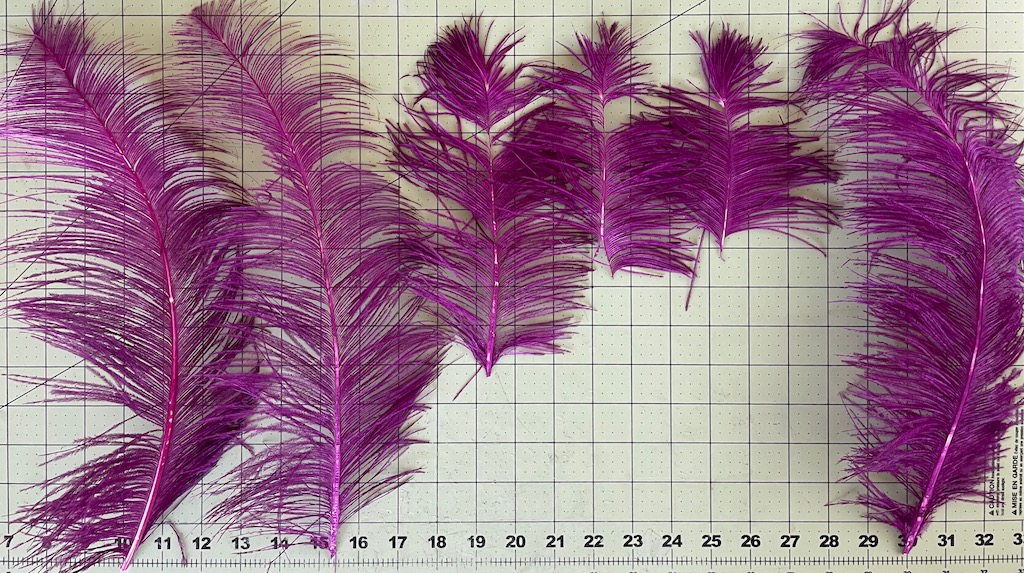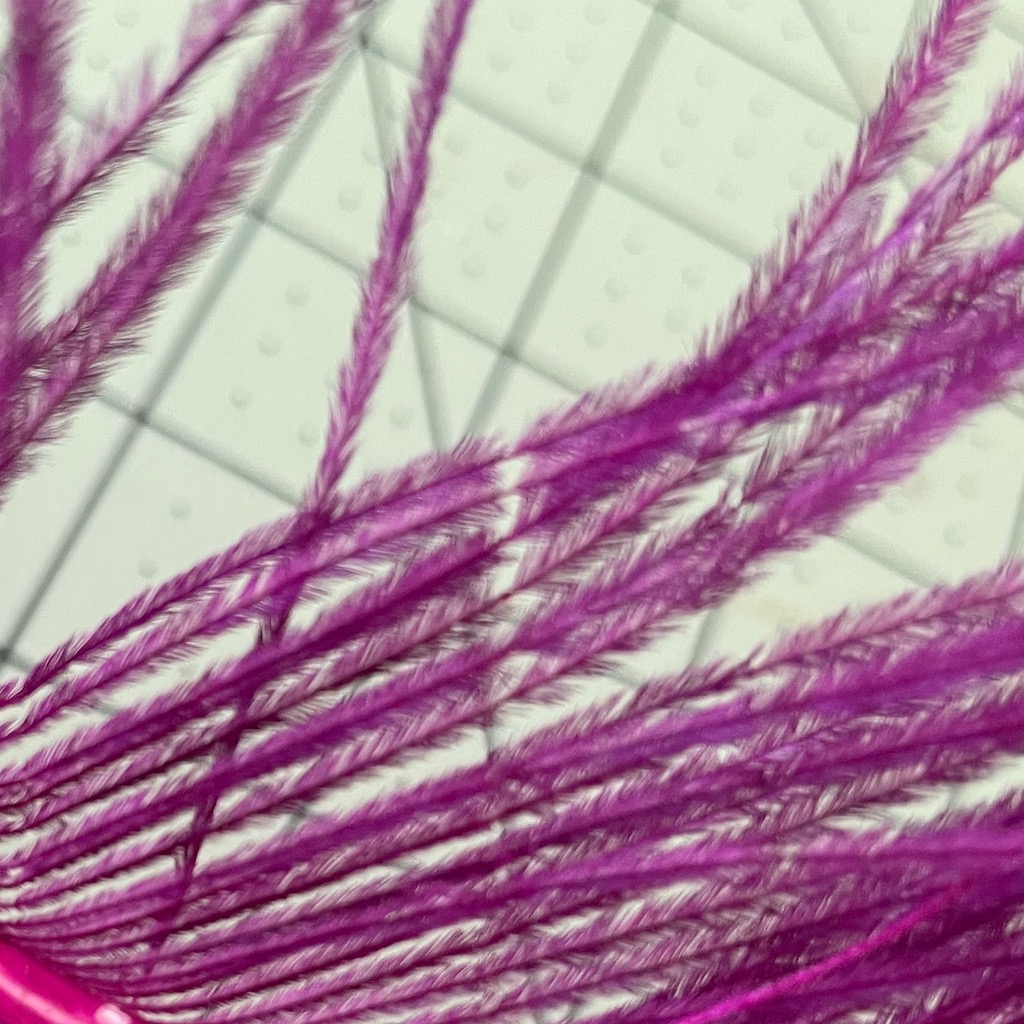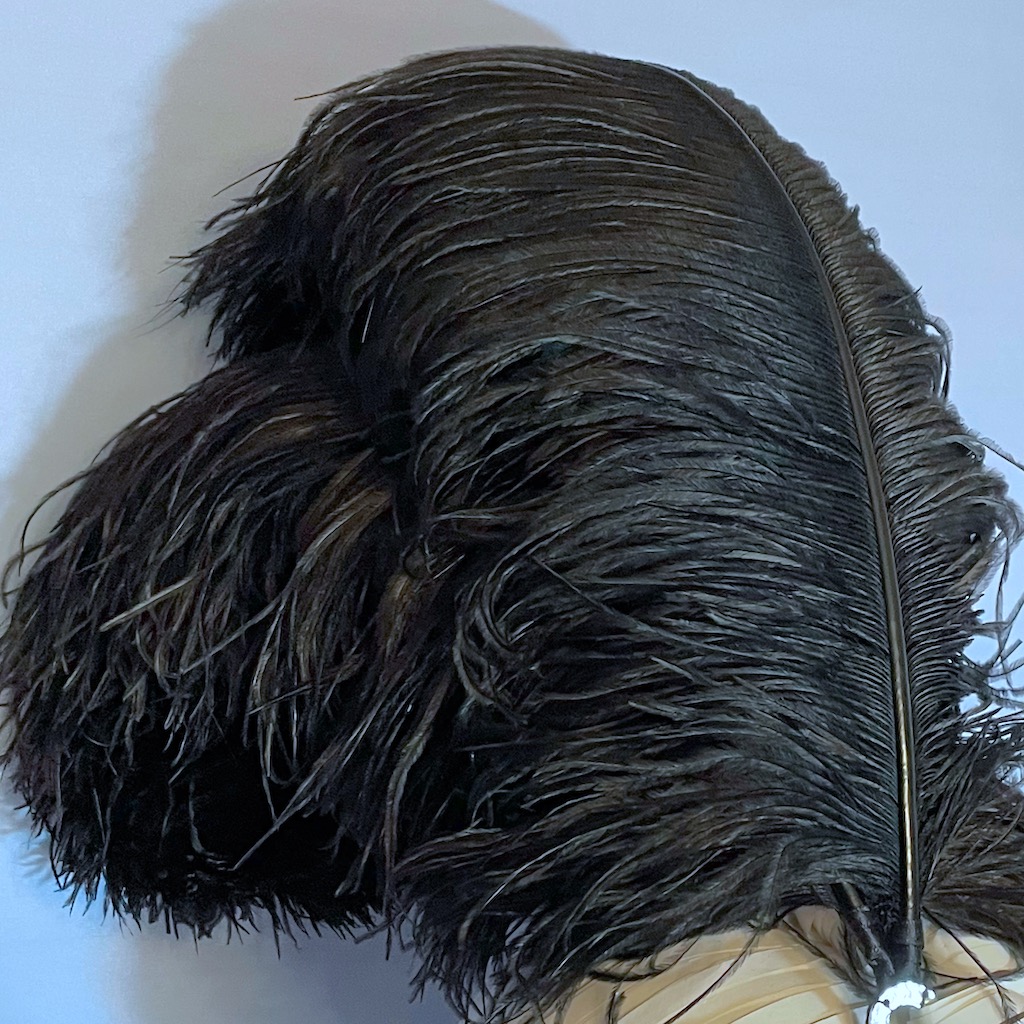
I was gifted this stack of vintage/antique millinery feathers. Some of them were familiar types and some were things I had never seen, some were in good condition and some not so much. The very center Ostrich plume (burgundy) was one of the ones not in very good condition. So, today after washing it and gently blow drying it I decided to take it apart to learn more about how plumes were made in the first quarter of the 20th C I’m guessing it is from that time period but it could be older.

I learned lots from taking it apart about how it was stitched together but also something I never really knew, how plumes from this period seemed to be really full near the tip. this is how they did it. 1) there are three full feathers. For the upper feather (left) the stem is left full, the middle stem (second on left) is thinned down on both the front and the back and, the bottom feather (right) is cut away on the upper side. 2) There are extra tip feathers added, this one has three (middle) each one a little shorter.

If you cut the plume across the center would look like this. The top stem left whole the middle thinned down from both sides and the bottom one with most of the top removed. In fact the middle stem did not even reach the very end of the plume it ended about 1″ or so above that. I do have an article on how to do it with a grinder, it is easier done with large thick feather stems.
I have known that feather stems were shaved or ground for a long time and have tried to do a fairly good job of it but it is a skill.

Here is a photo of two vintage plumes, you are looking at them from the tip side see how full the tips are. I counted the # of feathers at the base and all I could see were 3. But I bet from what I know now that each of these is made of parts of 6 feathers.
There is another thing about the black plume it is in wonderful shape you can shake it and nothing falls out. Where as with the burgundy feather it’s really dropping sections of the barbs and was the one reason I took it apart. Maybe the two pictures below will give you a hint.


Yes mites, the birds during their lifetime had mites. The telltale signs are the voids in the barbules that run in a diagonal line from barb to barb (on left). These are not just voids they are weak spots and that is here the barbs are breaking off. This plume must have been an inexpensive plume in its time usually at least the top feather and the bottom feather of a plume does not have voids, all the feathers in this plume had voids.
One thing I knew but never really studied was how the thread that sews the feathers together shows near the tip but disappears about 1/2 way down the stem.

Here are the two same black plumes from the stem side. If you look close up on the main stem you can not see the cross threads that are used to sew the feathers together to get the plume. If you check out my article on Ostrich basic skills I show how to sew feathers together but I have always just sewn them together so that the cross thread showed not thinking I could sew right thru a stem. I’m going to give it a try on my next set of feathers. I will be adding to this article.